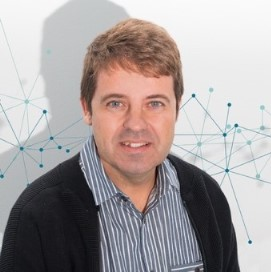New Trends in Supercritical Fluid and Green Processes
A special issue of Applied Sciences (ISSN 2076-3417). This special issue belongs to the section "Chemical and Molecular Sciences".
Deadline for manuscript submissions: closed (30 June 2020) | Viewed by 19129
Special Issue Editors
Interests: supercritical fluids; green processes; high pressure extraction; supercritical impregnation; bioactive compounds
Special Issues, Collections and Topics in MDPI journals
Interests: supercritical fluids; hydrothermal processes; supercritical water oxidation; supercritical water gasification; hydrothermal synthesis of nanoparticles
Interests: supercritical fluid; foaming; scaffold; conductive polymers; impregnation
Special Issue Information
Dear Colleagues,
I invite you to contribute to a Special Issue of the journal Applied Sciences, "Recent Advances in Supercritical Fluids and Green Processes". The main objective of this Special Issue is to present to the scientific community the current trends in the application of supercritical fluid technology in the development of sustainable and ecologically friendly processes.
The use of supercritical processes has seen an important development in the last three decades. While in the 1990s, the field focused on the application of this technology to the development of green extraction processes, especially of natural products, in the ensuing decades, the technology has evolved to the generation of nanoparticles, impregnation of substances, and the study of reaction engineering around supercritical conditions. The use of supercritical technology now has an important impact in areas related to agri-food, pharmaceutics, biomedicine, waste treatment, and manufacturing industries. In recent years, extraction processes have evolved to the generation of new enhanced solvents, in which carbon dioxide is incorporated as a modifier of solvent properties. On the other hand, there are numerous studies being developed that use supercritical fluid technology in the production of new materials. Nanoparticles oriented to increase the dissolution rate of poor soluble drugs and facilitate the penetration though membranes, polymer encapsulation of active substances to preserve its activity, avoid the “first pass effect“ and modulate the desired rate of release into the body, impregnated scaffold with bioactive substances produced by supercritical foaming and an impregnation one step process to be used as implants into the body, active biomaterials generated by supercritical impregnation processes, destruction of highly concentrated and hazardous wastewaters through supercritical water oxidation, and hydrogen production from wet biomass by supercritical water gasification are several examples of how supercritical technology has been contributing to the development of green processes. Articles related to the use of new solvents at supercritical conditions, modeling of processes, impregnation of particles and polymers, generation of nanoparticles, and the study of reactions in supercritical medium are welcome.
Therefore, I invite you to send your research on these topics, in the form of original research papers, mini reviews, and perspective articles.
Prof. Dr. Casimiro MantellProf. Dr. Jezabel Sánchez-Oneto
Dr. Antonio Montes
Guest Editors
Manuscript Submission Information
Manuscripts should be submitted online at www.mdpi.com by registering and logging in to this website. Once you are registered, click here to go to the submission form. Manuscripts can be submitted until the deadline. All submissions that pass pre-check are peer-reviewed. Accepted papers will be published continuously in the journal (as soon as accepted) and will be listed together on the special issue website. Research articles, review articles as well as short communications are invited. For planned papers, a title and short abstract (about 100 words) can be sent to the Editorial Office for announcement on this website.
Submitted manuscripts should not have been published previously, nor be under consideration for publication elsewhere (except conference proceedings papers). All manuscripts are thoroughly refereed through a single-blind peer-review process. A guide for authors and other relevant information for submission of manuscripts is available on the Instructions for Authors page. Applied Sciences is an international peer-reviewed open access semimonthly journal published by MDPI.
Please visit the Instructions for Authors page before submitting a manuscript. The Article Processing Charge (APC) for publication in this open access journal is 2400 CHF (Swiss Francs). Submitted papers should be well formatted and use good English. Authors may use MDPI's English editing service prior to publication or during author revisions.
Keywords
- Supercritical fluids
- High-pressure processes
- Supercritical impregnation
- Supercritical precipitation
- Nanoparticles by supercritical processes
- Supercritical foaming
- Hydrothermal processes
- Supercritical water oxidation
- Supercritical water gasification







